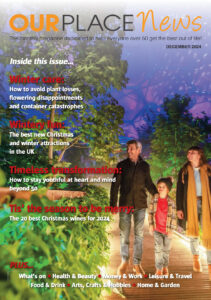The Royal Life Saving Society UK (RLSS UK), the drowning prevention charity, has issued a warning as the summer holidays kick off to a sizzling start.
 It has appealed to people to take note of simple safety messages to avoid a repeat of last summer’s tragedies when many people lost their lives cooling off in open water, not suitable for swimming.
It has appealed to people to take note of simple safety messages to avoid a repeat of last summer’s tragedies when many people lost their lives cooling off in open water, not suitable for swimming.
During these months, it is more important than ever to be aware around water and make sure that you and your loved ones are swimming only where it is safe and suitable to do so.
Figures released from the National Water Safety Forum (NWSF), of which RLSS UK is a partner, earlier this month revealed that the peak summer months of July and August witnessed the most deaths in 2013, with106 during the heat wave period.
So, with temperatures on the rise and many people preparing to enjoy the holidays and various activities, it is important they make the most of the water but do so safely and suitable, lifeguarded sites.
RLSS UK’s Director of Lifesaving, Adrian Lole, said: “Last year saw a tragic amount of preventable deaths as people flocked to open water sites not suitable for swimming. These sites included rivers, quarries, lakes and reservoirs – all of which have many dangers including very cold water, currents, obstacles and uneven depths. They look so inviting but can be deadly.
“Being aware of the basic principles of open water safety, combined with knowledge and understanding of the hazards, can increase enjoyment and significantly reduce the number deaths each year.
“Any drowning is a tragedy but the number of people who lost their lives last year was not only extremely sad but extremely worrying.”
Figures show the age group with the highest number of fatalities (31) in 2013 were men aged between 20 and 24. Meanwhile, 0 to 19-year-olds accounted for 12 per cent of deaths (46), of which more than half were teenagers aged 15 to 19 (27).
Leading activities people were taking part in when they drowned included swimming (predominantly in open water) and jumping into open water.
And in response, June this year saw RLSS UK’s annual campaign, Drowning Prevention Week, focus not only on Primary School aged children but young men and boys. The campaign saw a number of brave families speak out about how a loved one drowning had affected them and plea, along with the charity, for people to know the dangers.
They also helped with the nationwide water safety education in schools and communities.
Chantelle Aston is the sister of 15-year-old Richard Fellows (known as Porky) who drowned on March 16th this year when he got into difficulties after swimming with two friends in river pool that forms part of the River Arrow in Redditch, Worcestershire.
She said: “All of the schools are now breaking up and I know kids will be looking for things to do. I would just ask them to think twice before going into open water and think what happened to Porky. He was a strong swimmer and it only took seconds for him to get into difficulty. Please, parents and children, listen to the advice which could save lives this summer.”
Adrian added: “We want people to enjoy water, but safely and sensibly – using their common sense and listening to advice. Do not be tempted to cool off in open water, we do not want another summer of tragedy.”
Follow the below advice and take note of the dangers to avoid becoming one of the statistics:
Don’t:
• Swim at unsupervised (un lifeguarded sites) including lakes, quarries reservoirs and rivers
• Jump into the water until you have acclimatised to the water temperature
• Jump into the water from heights or ‘tombstone’
• Swim into deep water which will be colder
Do:
• Swim at supervised (lifeguarded) sites
• Swim parallel with the shore, where you can quickly get to safety
• Swim with friends or family, so that you can help each other if you need to
• Look for signs and advice about the specific dangers at the place where you are swimming
• Think about what you will do if something goes wrong
• Contact a reputable outdoor pursuits or coasteering centre if you want to take part in more extreme activities
Dangers of open water include:
• The height of the fall or jump if tombstoning
• The depth of the water – this changes and is unpredictable
• Submerged objects may not be visible • Obstacles or other people in the water
• Lack of safety equipment and increased difficulty for rescue • The shock of cold water can make swimming difficult and increase the difficulty in getting out of the water
• Strong currents can rapidly sweep people away
• Uneven banks and river beds
• Water quality eg toxic algal blooms and industrial / agricultural pollution
All of these hazards can be controlled through proper organisation and planning.
If someone is in difficulty in the water:
• Shout reassurance to them and shout for help and ensure the emergency services are on their way (call 999 or 112)
• Without endangering yourself, see if you can reach out to them, extend your reach with a stick, pole, item of clothing, lie down or stay secure. Alternatively throw something buoyant to them such as a ring buoy, part filled plastic container, ball or anything that will float.
• Keep your eye on them all the time and shout reassurance urging them to propel themselves to safety
(Article source: Choice)

